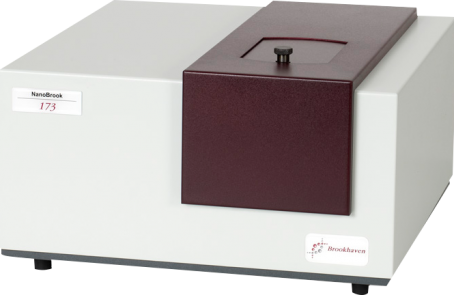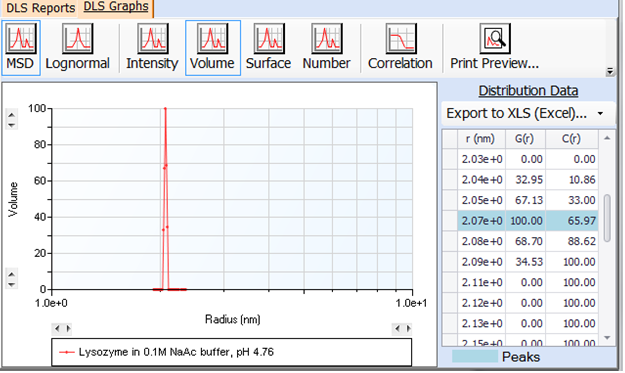
Features at a glance
- Rapid and accurate protein and nanoparticle size distributions
- Multimodal & unimodal size distribution software
- ISO 13321 and ISO 22412 compliant results
- Range > 0.3 nm to 10 µm
- Customizable reports
- Ideal for fast, routine sizing applications in research or quality control
- High power 35 mW diode laser
- Dynamic light scattering at 173° only
- Temperature control, -5 °C to 110 °C
- Compact bench top unit, USB connection
Brookhaven's NanoBrook 173 instrument is the go-to-solution for characterization of proteins, antibodies, nanoparticles, macromolecular assemblies and other molecules/particles of small sizes. The NanoBrook 173 uses backscattering detection for the highest sensitivity and accuracy optimized for molecules and particles less than a few tens of nanometers.
Reliable, Accurate, and Accurate Analysis
The new NanoBrook 173 protein and particle size analyzer incorporates all you need for fast, routine, sub-micron measurements. Based on the principles of Dynamic Light Scattering (DLS) for particle sizing and distribution, most measurements only take a minute or two.
Nanoparticles
Dilute suspensions, on the order of 0.0001 to 1.0% v/v are prepared, using suitable wetting and/or dispersing agents, if required. A small ultrasonicator is sometimes useful in breaking up loosely-held agglomerates. Sample volumes as small as 50 µL are used. Sample is recoverable. Disposable, polystyrene U-shaped cells are used for aqueous and simple alcohol suspensions. Just a few minutes are required for the sample and cell to equilibrate with the actively controlled temperature environment inside the NanoBrook 173.

Speed and low concentration/small size capabilities
The NanoBrook 173 utilizes backscattering to size the proteins/particles by accumulating the correlation function. The smoother the function, the better the results are. For small molecules, the scattered intensity is typically low. The measurement takes longer to get enough statistics from the photons counted to aquire a good results. The backscattering angle makes for a larger scattering volume, measuring more proteins/particles for a quick measurement of their sizes. The advantage of the backscattering is clear for sizes below 10 nm.
Data Presentation
The NanoBrook 173 protein and particle size analyzer offers many choices for data analysis. One choice is the lognormal distribution by: intensity, volume, surface and number. Another choice, the full size distribution (MSD) can be displayed by the same four weighting factors. In the example above, the MSD is presented by volume for lysozyme. The size distribution and cumulative distribution are shown in the table on the right. Lysozyme has a very low polydispersity in this case.


 (028) 22 611 711
(028) 22 611 711
 Danh mục
Danh mục
 High Purity Northwest Inc.
High Purity Northwest Inc.
 Phóng Điện Cục Bộ
Phóng Điện Cục Bộ


































 Gọi điện
Gọi điện SMS
SMS Chỉ Đường
Chỉ Đường